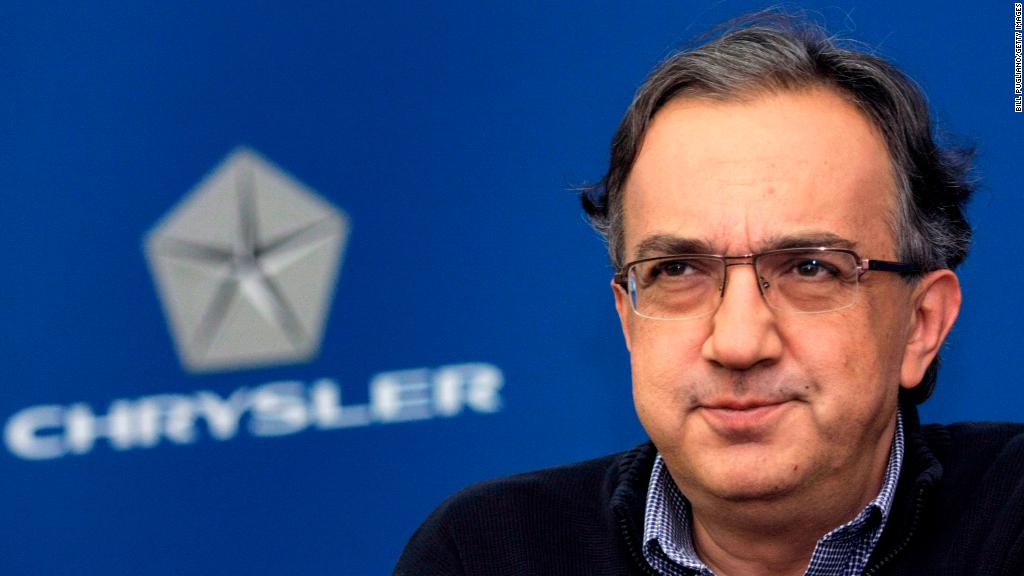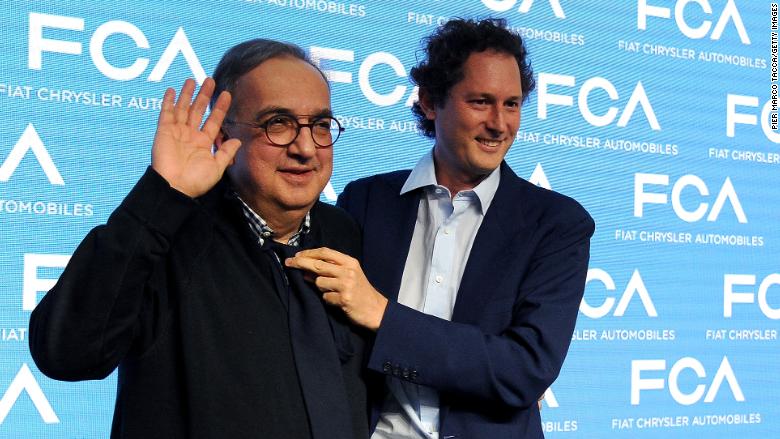
In 2009, in his first address to employees at Chrysler, Sergio Marchionne invoked the Zulu greeting "sawubona."
It means "I see you." And the traditional response is "sikona," or "I am here."
"The sequence of the exchange is important," Marchionne said. "Until you are seen, you do not exist. From my end, I can simply tell you that I see you. I am glad you are here."
They were glad he was there, too.
Employees at Chrysler had suffered through months of crisis that ended in a government-controlled bankruptcy.
The speech was quoted in a book written by Steven Rattner, who worked with Marchionne to save Chrysler. The words surely meant the world to its beleaguered workers, who had suffered through months of crisis that ended in a government-controlled bankruptcy.
No other auto executive would have introduced himself that way. But then not many others could have done what he did. Marchionne, who died Wednesday at age 66, was an outsider to the industry who saved not one, but two car companies.
Related: Sergio Marchionne, the CEO who saved Fiat and Chrysler, dies at 66
Marchionne became the CEO of Fiat in 2004, his entry into the auto industry.
He quickly reversed a string of quarterly losses at the Italian automaker, and re-introduced the tiny Fiat 500, a model that now defines the brand globally.
A strengthened Fiat then became the savior of crippled Chrysler, with Marchionne as CEO.
By the 2008 financial crisis, Chrysler's competitiveness had suffered through the years of its merger with Mercedes-Benz owner Daimler and later ownership by Cerberus Capital Management.
Through those years, the quality of Chrysler's newly introduced products deteriorated to the point that some weren't remotely competitive. Marchionne himself would later call the Dodge Caliber "an abomination."
When America's economy crumbled, Chrysler needed help to survive, and Fiat seemed a perfect partner.
Fiat wanted to get into the US market, and Chrysler needed some good small cars. Marchionne was the right man, too.
He resurrected both Fiat and Chrysler by never thinking like an insider.

Most auto industry CEOs wear a suit and tie, which require care in their selection and in their maintenance. As CEO, Marchionne always wore black sweaters. Sweaters are easy to care for and easy to pack, and no decision-making is required just to get dressed for work. It doesn't matter that no other auto executive dressed this way. He did what made sense.
He took the same tack with the businesses he ran.
He was clearheaded and outspoken. Often brutally so.
After he took over Chrysler, he quickly announced a new leadership team, and just a few months later two of his top executives left the company as Marchionne rearranged things again.
In Marchionne's unusual management structure, some people were given multiple roles. Ralph Gilles, for instance, was initially both CEO of the Dodge brand and head of product design for all of Chrysler. Fred Diaz was named CEO of the newly created Ram truck brand and head of marketing for the whole company. (Gilles is now head of design for all of Fiat Chrysler. Diaz later left the company and is now CEO of Mitsubishi North America.)
When it came to dealing with the media, he expected discipline from those who worked for him but exhibited refreshingly little of it himself. A press conference with Marchionne was always an interesting and entertaining event.
He freely criticized his own company's products and performance in public forums. He once admitted that the launch of the Dodge Dart, a car engineered under his leadership, hadn't gone well. The car wasn't initially offered with the engines and transmissions Americans would have preferred, he said. In the long run, the Dart was pulled from the market because, as it turned out, Americans had largely turned away from small cars.
While other auto industry captains were boasting of their enthusiasm for electric cars, Marchionne admitted that they were expensive to make and that there was, at present, little market for them.
In 2013, he complained openly that Fiat was losing money on the Fiat 500e, an electric that California rules required it to sell there.
When reporters wondered what would become of Fiat Chrysler without Marchionne, he expressed confidence in the people he expected would take over for him.
"I think the leadership will be the right leadership and that's all that matters," he said at the Detroit Auto Show in January.
He isn't handing over control of the company he helped build in the way, or at the time, that he had planned. But at least he was able to leave things in hands he helped to choose.
-- Peter Valdes-Dapena has covered the auto industry for CNNMoney for 18 years.

